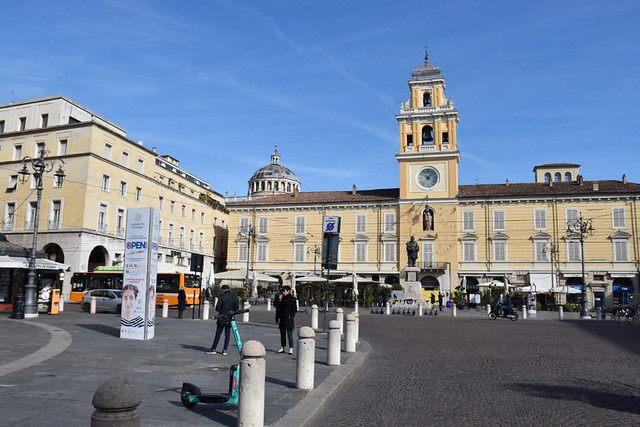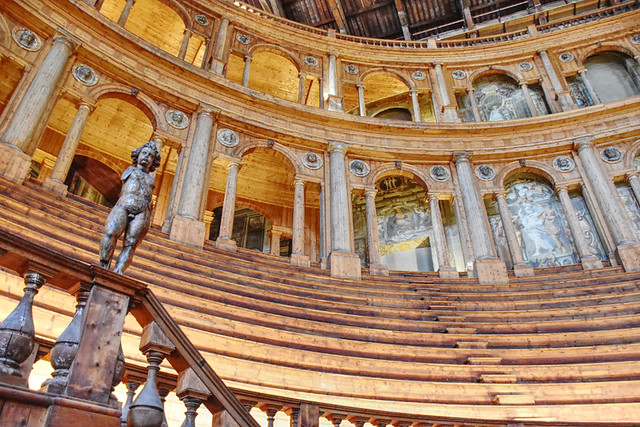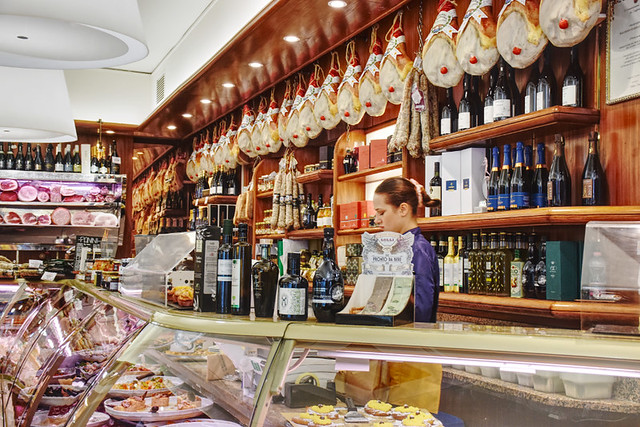The ‘posh’ city of Italy’s Emilia Romagna region, Parma was founded by the Romans in 183BC. It flourished as a trading post on the Via Emilia, the famous Roman road which dissected Emilia Romagna, connecting Placentia (Piazenca) with Ariminum (Rimini) before it travelled south to Rome.
What set Parma apart from its neighbours, and established a reputation as a well to do, somewhat superior city was when Pope Paul III created the title of the Duchy of Parma as a buffer between the Church states to the east and Spanish-held Lombardy to the west, which he gave to his son, Pier Luigi Farnese. For the following two hundred years, the Farnese family invested in Parma’s development, making it a centre for art and culture. Its air of superiority was fuelled further when Napoleon’s wife, Marie Louise was assigned the Duchy in 1815, bringing French and Austrian influences; croissants and sachertorte (an Austrian cake) are popular in Parma as a result.
This legacy has resulted in an attractive and elegant city whose inhabitants are well-dressed, even by Italian standards, and have a love of culture and gastronomy; Parma has UNESCO Creative City of Gastronomy status. For all its haughty reputation (an accusation levelled by Parma’s neighbours) it is a friendly, interesting, and tastebud-pleasing place to spend time in. To get a feel for the place, head to Strada Farini early evening and do what the locals do, order an aperitif, sit back, and soak up the atmosphere of a great Italian city.
The Main Attraction – The Duomo & the Baptistry
On Piazza del Duomo are two classic historical beauties. The Santa Maria Assunta Cathedral (free entry) dates from 1074 and deserves a visit whether anyone is interested in religious architecture or not. Highlight of the impressive structure is Correggio’s controversial painting, The Assumption of the Virgin, which decorates the dome of an apse near the altar. It might look murky from way below, but drop €2 into a coin slot beside the apse and the painting of the heavens is illuminated in all its glory. Next door is the octagonal Baptistry of San Giovanni Battista whose pink Verona marble façade positively blushes in the soft sunlight.
Cultural hot spot – Farnese Theatre
Located within the Palazzo della Pilotta (€12 entry – including the National Gallery and National Archaeological Museum), the Farnese Theatre is quite magical. It is more than a theatre, it is a work of art. Completely constructed from wood, plaster, and straw, it is a miracle it still exists. When its inaugural show Mercury & Mars took place in 1628, it’s claimed it was the first opera performed in Italy. It’s an incredible theatre, the sort of venue you’d expect all the world’s great plays to have been staged. Yet in the hundred years after its inauguration, there were only another eight performances. In 2012, after three centuries of inactivity, it opened its doors to the public once again.
Away from the crowds – Piazza San Bartolomeo
Duck down a narrow alley opposite Basilica di Santa Maria della Staccata to reach the charming little Piazza San Bartolomeo, home to a small market where locals have purchased fruit and vegetables since the 11th century. It feels like a quirky little piazza, probably because of the presence of the Osteria del Teatro, where dishes are served on vinyl LP placemats, and the Torrefazione Gallo Café, which looks like the sort of joint where writers and poets should hang out.
A taste of Parma – Prosciutterias & Salumerias
Everyone knows about Parmesan cheese (Parmigiano Reggiano) and Parma ham (prosciutto di Parma) but pop into a prosciutteria or salumeria and you’ll quickly discover there are a lot more Parma specialities to wrap your chops around. These delicatessens are where locals do their shopping, picking up a range of cured meats and the best quality Parmigiano as well as pastas, olive oils, plates of roasted vegetables, lasagnas, torta frita … all sorts. And even better, you can sit inside some and sample the goodies. Salumeria Garibaldi on Strada Garibaldi is one of the best.
Favourite eating spot/drinking hole – Strada Farini & Borgo 20 Marzo
Enjoying a post-work aperitif, usually served with snacks, is part of Parma life. Enoteca Fontana on Strada Farini has been a popular spot for imbibing wine since the 17th century, now it’s a watering hole for workers and students. As far as restaurants go, Borgo 20 Marzo has a few good ones, all with contrasting menus. Our pick would be La Forchetta, a modern, stylish restaurant whose chef fuses flavours of the Mediterranean with Emilia Romagna cuisine. It’s a wee bit pricey, but worth those extra Euros. One of their desserts, Violetta di Parma, is a violet-flavoured pudding that is divine.
The quirk – Raw horse meat panini
Back in the 1800s, a disease affecting bovines meant cow meat was unsafe for human consumption. The good people of Parma took to eating carne equine (horse meat) instead, and it became so popular they stuck with it. For some reason, it’s traditionally eaten raw. Pesto di cavallo tastes just like steak tartare, maybe a bit stronger flavour. One of the most unusual ways to eat it is in a panini from Da Pepèn, a hugely popular traditional sandwich shop up a side street. It might not sound appetising, but it is very tasty – I speak from first-hand experience. There are plenty of other options for anyone who doesn’t fancy raw horse in their butties.
Summary
We loved spending time in Parma. It’s an attractive and comfortable city in which to pass the time just wandering old streets, pausing at atmospheric bars to snack and people watch, and popping into artisan delicatessens to pick at pastas, prosciutto, and Parmigiano Reggiano drizzled with balsamic vinegar from nearby Modena. But remember to pack your coolest clothes to try to blend in with the chic locals.











Be the first to comment